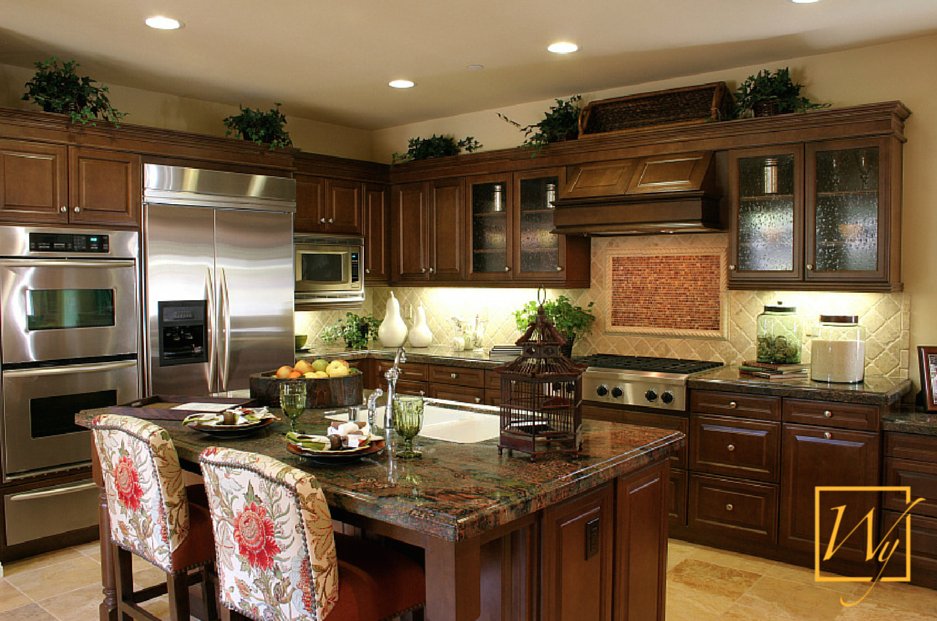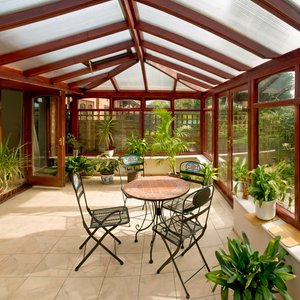Table of Contents
Remodeling projects can often come with a high price tag. The expenses involved aren't just monetary, either. Homeowners renovating their kitchens, bathrooms or other rooms are sure to find themselves investing large amounts of time and energy in the endeavor as early as the planning stages. Furthermore, while a renovation project is under way, the job can present considerable physical challenges, as families might not be able to utilize the room or area of the house being worked on.
Despite the high investment, homeowners continue to commit to renovations because of the long-term benefits they offer — whether that is the added light of a sunroom, the warming comfort of electric floor heating, or the space to gather together friends and family more comfortably. Given the investment involved, however, it's essential to consider how the project will increase the value of the home when it comes time to sell. Here are three key principles to keep in mind.
1) Design with intelligence
Planning your remodeling efforts around value requires a keen understanding of the costs and projected benefits of your plan. In a column for the Houston Chronicle realtor Danny Frank discussed the comparative returns on investment offered by different renovations. Often, Frank reported, smaller projects yield the greatest returns. Homeowners can typically recoup about 75 percent of the cost of an $18,000 kitchen upgrade, but only 63.3 percent of one that costs more than $100,000. However, he also noted that these figures vary considerably across geographical regions, and even from town to town within the same area.
For a good, broad estimate on the value you will recoup from your renovation, check out the latest 2015 Cost Vs. Value Report from Remodeling.com. You can also use the Get an Instant Quote tool from WarmlyYours Radiant Heating to get a better sense of the monetary investment of adding indoor floor heating, towel warmers, radiant panels, outdoor snow-melting systems, or roof and gutter deicing systems as part of your renovation.
Homeowners should also consider how a future buyer might look at the project they're undertaking. Frank pointed out that renovations geared toward niche interests — remodeling your living room to be a replica of a sports complex, for example — are unlikely to seem useful to a prospective buyer. The convenience of a heated driveway, on the other hand, might strike a buyer as a real value-add to the home — especially in areas with a high average of snow days a year.
2) Don't shortchange your needs
Of course, the utility that you and your family get out of your remodeling project can't take second place behind increased home value. Especially if you aren't planning to uproot any time soon, you can (and should) take a wider-lens approach when you calculate the return on investment your renovation will yield. Rather than simply playing to the market, consider the personal satisfaction you'll gain from your home once the project is complete. Also, be honest about what your family needs.
“It's important to remember that every home in every market is different," Frank wrote in the column. “It's true that the data says you won't get much return on your investment from adding a sunroom (49.7 percent), but what if you really want a sunroom?"
A renovation can also help you take better advantage of the space you own. When asked by the Journal Sentinel what room they used most after their remodeling project, Milwaukee-based couple Lisa and Paul Sweeney noted how renovation increased their home's utility.
“Actually, now we use just about every room of the house," Paul Sweeney told the news source. “There isn't much wasted space."
3) Embrace energy efficiency
The return on investment offered by sustainable renovations makes them too valuable to overlook. Energy-efficient technologies offer considerable value in both the short and long term. The money you spend on radiant heating, for instance, will often quickly enable you to reduce your overall heating costs, in addition to providing added comfort. Read about the positive reduction in heating costs from the Norfolk family, who installed a floor heating mat in their cold two-story vaulted family room in Greer, S.C.
Energy efficiency is also of key importance as homeowners look ahead to selling their homes, as environmentally friendly houses are becoming more popular and in higher demand. A study by the Joint Center for Housing Studies at Harvard University found that 72 percent of homeowners who undertook renovations between the third quarters of 2012 and 2013 installed energy-efficient products.
As more homes continue to go green, consider how your renovations can reduce your house's impact on the environment. Failing to do so could make potential buyers look elsewhere.
Combining energy efficiency with intelligent, thoughtful planning and an honest look at your personal needs will help ensure your renovation will be authentically valuable for you.
Are you considering radiant heated floors as part of your renovation? Let us know how your renovation goes! Share your photos of the renovation (in progress or completed) on the WarmlyYours Facebook page or tweet us at @WarmlyYours. To add radiant heat to your home today, call 800-875-5285 or email info@warmlyyours.com.
Sources:
www.jchs.harvard.edu
Have Questions About Your Project?
Our team of Radiant Experts is ready to help!








